As an avid photographer, you're no stranger to the resurgence of analogue photography. It's not just a fleeting trend, but a conscious choice by many professionals and enthusiasts alike to reconnect with the roots of photography. The tactile experience, the anticipation, the unique aesthetic - there's just something enchantingly beautiful about shooting with film. But if you're going to jump on the analogue train, you're going to need a crucial piece of tech in your toolbox - a reliable film scanning software. And that brings us to SilverFast 9. Is it the go-to choice for film scanning? Let's find out in this comprehensive review.
Editorial preface
I am and have been a happy user of SilverFast for my analogue photography for 20+ years. Heck, it’s the reason I applied for a job there many moons ago. Full disclosure: I still work there, I’m very biased and I think it’s the bees knees (read disclaimer and my profile on LinkedIn). But I think this review will still be worth your time. There are plenty of reviews on SilverFast out there and since I started this website/blog as a pet project for 2023, I figured why not write my first review about something I actually know a thing or two about to hone my writing skills. Stick around until the end and let me know in the comments whether I did a good job of coming up with a useful review. You might also want to revisit this review, as I will be updating it, if necessary. Yes, there will also be other non-SilverFast related reviews here in the future, so stay put.
If you already use SilverFast and have a question on something I covered in my article or something unrelated, feel free to post it in the comments. But I wholeheartedly recommend heading over to the online help center and search the Knowledge base or contact the official support channel. I don’t monitor the comments section of my website as closely all the time and you’ll probably receive an answer to your questions much faster from my fantastic colleagues – they are truly world-class! (Yes gals and guys, this one goes out to you! Don’t be shy about it 👋🤩!)
In this review, I will share my experience using SilverFast® 9 and provide an honest assessment of its capabilities . I will evaluate some selected features, ease of use, and overall performance, and compare it to other popular film scanning software options. My goal for you as a reader: By the end of this review, you might have a better understanding of whether or not SilverFast® 9 is the best choice for your film scanning needs.
The scope of this website doesn’t allow me to provide a comprehensive, in-depth review of every feature in SilverFast or simply copy&paste the (marketing) information from the SilverFast website. But if this article sparks some (or any) sort of interest, drop me a comment below and I might write a follow-up article next. So without further ado, let’s get started!
Why Is a Scan Software So Important for Film Scanning?
When it comes to film scanning, the importance of having the right scan software cannot be overstated. The software is the interface between your scanner and your computer, allowing you to control the scanning process and capture the best possible quality from your film. Without the right scan software, you may not be able to fully utilize the capabilities of your scanner, resulting in subpar scans. Additionally, film scans require a different approach than reflective scans, as they have different color profiles and require adjustments to compensate for the distinctive characteristics of the film medium. The right scan software will allow you to adjust for these differences and create high-quality scans that accurately capture the colors and details of your film. It will also provide tools to remove dust & scratches automatically (a much more prominent issue compared to reflective material), capture the available dynamic range in your originals, adjust for exposure and preserve the distinctive color appearance of some film emulsions. In short, a dedicated film scan software is essential for achieving the best possible results when scanning film. It allows you to fine-tune the scanning process and capture images that accurately represent the original film. Choosing the right software can make all the difference in the quality of your scans, and can save you time and frustration in the long run.
What Is a Dedicated Film Scanning Feature?
Whether you use a flatbed scanner that’s capable of handling reflective AND transparent scans, or a dedicated film scanner, in the realm of film scanning, a dedicated film scanning feature refers to specialised functionality that is specifically designed for scanning film negatives or positives. They will allow you to scan scan negatives, slides, and other types of film with ease. These features are essential for anyone who wants to digitize their film collection, as they ensure that your film scans are of the highest quality possible. One of the benefits of a dedicated film scanning feature is that it allows you to adjust the scanning settings specifically for film. This means that you can preserve the color appearance and color balance to ensure that your scans not only look as good as possible, but also contain the special characteristics of the film you’re scanning. Another advantage of a dedicated film scanning feature in a scan software is that it can save you time. This is especially important if you have a large collection of films that you want to digitize. In summary, dedicated film scanning features are essential for anyone who wants to scan film. It allows you to scan your film directly, optimize your settings for film, and save time. If you’re serious about scanning film, then you should definitely consider investing in software that has dedicated film scanning features.
Let’s delve into the key functionalities of dedicated film scanning and why it is essential for obtaining high-quality scans from film material.
- Film Holder
Dedicated film scanning software often includes support for a wide array of specific film holders that ensure proper alignment and flatness of the film during the scanning process. These holders are designed to accommodate framed slides, film strips and single sheets for different film formats, such as 35mm, medium format, or large format up to 8 x10, and help prevent film curling, warping and newton rings. By securely holding the film in place, the film holder and mounting options ensure accurate and consistent scanning results. - Film-Specific Scanning Modes
Film scanning involves different considerations compared to scanning printed materials or documents. Dedicated film scanning features offer specialized scanning modes optimized for film, taking into account factors like dynamic range, color accuracy, and spectral transmittance of the color dyes in film. These modes help extract the maximum level of detail and quality from film negatives or positives, resulting in scans that faithfully represent the original film. - Color Calibration and Film Profiles
Film materials exhibit unique color characteristics and require precise color calibration to achieve accurate color reproduction in the scanned images. Dedicated film scanning features often include color calibration tools and pre-defined film profiles that emulate the color response of specific film types. These profiles help maintain color fidelity and reproduce the distinctive look and feel of different film stocks during the scanning process. - iSRD and Film Restoration
Film scanning can be prone to imperfections such as dust, scratches, or fingerprints. Dedicated film scanning features often incorporate advanced technologies like SilverFast’s iSRD for automatic dust and scratch removal. This technology utilizes infrared scanning and advanced inpainting algorithms to identify and remove such imperfections, significantly reducing the need for manual retouching. - Fine-Tuned Control and Workflow Efficiency
Dedicated film scanning features provide fine-tuned control over various scanning parameters and settings specific to film materials. These include options for adjusting exposure (midtones), contrast, color balance, sharpening, and noise reduction. Having precise control over these settings allows users to achieve their desired results and tailor the scanning process to their specific needs. Additionally, dedicated film scanning features often streamline the workflow by offering batch scanning capabilities, automatic frame detection, and other efficiency-enhancing functionalities.
In summary, a dedicated film scanning feature in scanning software provides specialized functionality and settings tailored to the unique requirements of film scanning. It includes film holders or mounting options, film-specific scanning modes, color calibration and film profiles, film restoration capabilities, and fine-tuned control for optimal results. By utilizing these dedicated features, photographers, archivists, and enthusiasts can obtain high-quality scans from film materials while preserving their unique characteristics.
Overview of SilverFast
SilverFast is a family of software suites for image scanning and processing, including photos, documents, and slides, developed by LaserSoft Imaging. With its cutting-edge technology, it has the potential to become an invaluable tool for anyone involved in analogue photography. Whether you’re scanning 35mm film or various other formats, SilverFast has got you covered.
It’s designed to produce high-quality scans that accurately reproduce the film’s colors and details. It supports a broad range of scanners, from flatbed to dedicated film scanners, further cementing its compatibility and usefulness.
One of the key strengths of SilverFast is its powerful algorithms for image processing. These algorithms process the data coming from the scanner to produce high-quality images with excellent detail and color accuracy. The software also offers a range of advanced features, such as MultiExposure, which allows for the scanning of high dynamic range and noise reduction, and infrared cleaning, which automatically removes dust and scratches from the scanned images, as opposed to having to manually retouch those in Photoshop.
SilverFast is compatible with a wide range of scanners, including those from Epson, Canon, Nikon, Plustek and others. It also supports a range of file formats, including TIFF, JPEG, and HDR RAW.
But, the burning question is, why should you choose SilverFast 9 over other film scanning software in the market?
Why SilverFast 9?
Now, let’s dig into the heart of the matter – what sets SilverFast 9 apart from other film scanning software? Here are a few reasons why SilverFast 9 might just be the perfect match for your film scanning needs.
Unparalleled Quality
With SilverFast 9, image quality is paramount. The software’s unique Multi-Exposure function extends the scanner’s dynamic range, allowing you to capture every intricate detail and subtlety in your film negatives. This is a game-changer, especially when scanning high-contrast scenes or dense negatives.
Superior Dust and Scratch Removal
Anyone who has handled film Negatives, Slides or Kodachromes knows how easily they can attract dust and scratches. The revolutionary iSRD function in SilverFast 9 uses infrared technology to detect and remove these imperfections automatically at the time of scanning, saving you countless hours in post-processing and ensuring that your scans look as clean as possible.
Comprehensive Film Profiles
Thanks to SilverFast’s extensive library of negative film profiles, the Negafix tool can accurately emulate the unique color characteristics of different film stocks, from popular ones like the Kodak Portra series and Fujifilm Superia, to more obscure and discontinued emulsions. Whether you’re scanning color negatives, black & white, or even slide film, SilverFast 9 has a film profile for you.
User-friendly Interface
SilverFast 9 boasts a redesigned user interface with a light and dark theme that simplifies the scanning process. It has an intuitive layout, easy-to-understand controls, and a helpful preview feature that allows you to see the effects of your adjustments in real-time. The unique history function in SilverFast allows you to scroll backwards and forward in your editing workflow, making it much more than just a simple “Undo” imho.
Feature Highlights of SilverFast
Fully Automatic Scanner Color Calibration
SilverFast’s (fully automatic) Scanner Color Calibration feature ensures that your scans are accurate in color and true to life. It automatically profiles your scanner, eliminating the need for manual adjustments, to achieve the color appearance of the original.
When color calibrating a scanner, a special chart is required to be inserted into the scanner because it provides a standardized reference for measuring and adjusting the scanner’s color output. The chart contains a set of color patches that are specifically designed to represent a wide range of colors, tones, and saturation levels.
By scanning the chart and comparing the resulting colors to the known values of the color patches, color calibration software can determine how the scanner “sees” colors, and make adjustments to ensure accurate color reproduction. In layman terms, in order for the GPS-navigation in your car, to calculate the route to your destination, it needs to know the exact starting position. SilverFast 9 does the same thing, just without all the satellites but an IT8-chart and the accompanying reference file instead. It will measure where your scanner is positioned color-wise and then the built-in CMS (color management system) can calculate the route to the destination color of your printer, screen or output process.
While this process used to involve a lot of necessary steps to be performed manually in a certain order, the whole process left a lot of room for error by the user, resulting in faulty profiles and inconsistent color accuracy. SilverFast was the first to introduce a fully automatic scanner calibration, literally making it a push-one-button-and-done process for todays users.
This feature is especially useful if you are scanning a large number of images and want to ensure consistent color accuracy across all of them, because it just takes a minute or two to calibrate your scanner prior to scanning a batch of film.
Professional Color Management
Professional color management is the process of ensuring consistency and accuracy in color reproduction across different devices, such as computer monitors, printers, cameras and scanners. It usually involves the use of specialized software and hardware tools to calibrate and profile these devices, and to convert color information between different color spaces.
When performed correctly it allows to achieve accurate and consistent results, and to ensure that a scanned film original looks the same on different devices and in different environments. By implementing professional color management practices, professionals can save time and reduce errors, and deliver high-quality results that meet the expectations of their clients and customers.
SilverFast’s Professional Color Management feature does not require the use of extra 3rd party specialized software, it’s a core component and built into every version of SilverFast. You probably won’t notice it and you won’t find a slider for color management in the software, as it works quietly in the background for you. There are some settings in the preferences you can change for certain applications requiring a certain configuration, but 90% of the time the factory settings will ensure consistency and accuracy.
iSRD – Infrared based Dust & Scratch Removal
The iSRD (Infrared based Dust & Scratch Removal) feature is a powerful tool for removing dust and scratches from your scans. It uses infrared technology (most serious film scanners and even some flatbeds have an extra infrared light source) to detect and remove imperfections, resulting in clean and polished images. This feature is especially useful for scanning old or damaged film, which may have accumulated dust and scratches over time.
NegaFix – Numerous Negative Film Profiles
The Negafix feature in SilverFast scanning software is unique because it provides highly accurate and automated color correction for negative film scans. Negafix uses a comprehensive database of newer and older film types, including manufacturer, film type, speed and emulsion batch, to accurately reproduce the colors, tones and appearance of different negative films.
This feature includes profiles for a wide range of negative film types, including black and white and color film and is especially useful if you have a large collection of different negative film that you want to digitize.
Overall, Negafix is a powerful and unique feature that sets SilverFast scanning software apart from other scanning software on the market, and makes it an ideal choice for anyone who requires high-quality and accurate color correction for negative film scans.
JobManager – Efficient Batch Scanning
The JobManager feature is a powerful tool for batch scanning multiple images at once, saving time and increasing efficiency. The software automatically detects the individual images and saves them as separate files. Users can also adjust the settings for each individual scan manually or apply the same settings to all scans in the batch. It allows you to set up and save a batch of scans as a “Job”, so you can quickly and easily scan multiple images with the same or individual settings.
Efficient batch scanning requires attention to several key factors:
- Batch preparation: Organizing the film or images to be scanned and the ones not worth to be scanned for example because they’re out-of-focus ahead of time can save a significant amount of time during the scanning process.
- Scanner settings: Configuring and synchronizing the scanner settings across the batch can help ensure that the scans are consistent and high-quality. This can include adjusting the resolution, color mode (bit-depth), and file format, as well as using features like auto-cropping, iSRD dust & scratch removal, MultiExposure etc.
- Automation: A batch scanning feature in scan software can automate many aspects of the scanning process, such as image separation, image enhancement, file naming and organization.
- Quality control: Double-checking the settings of the scans prior to the actual time-consuming batch scanning process can help ensure that the output is consistent and error-free. This includes visually inspecting the scans in the scan software and being able to make adjustments to the settings of a particular scan or the batch scanning software in general as needed.
The JobManager feature in SilverFast enables you to pay close attention to these key factors, so efficient batch scanning will save you time and increase your productivity, while ensuring that the resulting scans are of high quality and accuracy.
MultiExposure – Dynamic Range Enhancement
The MultiExposure feature is a powerful tool for enhancing the dynamic range of your scans, beyond the specifications from the scanner manufacturer. All this is possible without any diy hardware modifications that will void the warranty. The user simply needs to activate it and SilverFast scans the same image multiple times at different exposure levels, then combines them into a single image with a wider dynamic range. This feature is especially useful if you are scanning high-contrast images, including but not limited to Kodachromes or Negatives. Think of it as a similar feature like the Dual-ISO settings in sophisticated digital cameras. This takes advantage of the way the sensor reads off data to sample half the lines at one ISO (for the highlights) and half the lines at another ISO (for the shadows). This increases the camera’s dynamic range by leveraging the best of both ISO settings. SilverFast’s MultiExposure will read all lines from the sensor for the highlights in one pass and again for the shadows in a second pass. This increases the overall scanning time, but ensures you will capture all the dynamic range available in your original.
By the way, dynamic range is often confused with Dmax (maximum density/tone that can be captured) when the scanner manufacturer lists the technical specifications. Dynamic range is everything between Dmin and Dmax and a higher Dmax helps a bunch with dynamic range but the scanner’s actual performance to capture the full range can still vary.
Dynamic range is typically expressed as a logarithmic value, and common values range from around 3.0 (good) to 4.0 (excellent). Head over to the SilverFast homepage to check out some of the increased in dynamic range you can achieve with MultiExposure.
Kodachrome mode
Kodachrome film is a type of color reversal film that was introduced by Kodak in 1935 and was discontinued in 2009. It was known for its unique characteristics, including its high resolution, vivid colors, and long archival life.
Kodachrome film is rather difficult to scan due to several factors, including its complex development process and its unique color characteristics.
One of the challenges of scanning Kodachrome film is its complex development process, which involved three separate layers of emulsion that each responded to different spectrums of light. This process produced a distinctive color palette that was characterized by strong, saturated colors, especially in the blue and green tones. Kodachrome also had a very fine grain structure, which contributed to its high level of detail and resolution.
This can make it difficult for scanners to accurately reproduce these colors, especially when dealing with highlights and shadows, which can be particularly challenging to capture.
Another issue when scanning Kodachrome film is its density. Kodachrome film is known for its high density, which means that it requires a high level of exposure and a longer scanning time to capture all of the details and colors present in the film.
Overall, due to its unique characteristics, scanning Kodachrome film can be challenging and requires specialized know-how and expertise to achieve accurate and consistent results.
The Kodachrome mode in SilverFast is specifically designed for scanning Kodachrome film. It uses dedicated algorithms to enhance the color and contrast of Kodachrome film, resulting in more vibrant and accurate scans.
WorkflowPilot
SilverFast’s WorkflowPilot is a step-by-step assistant that guides users through the scanning process, making it easy for even novice users to achieve professional-quality scans. The WorkflowPilot offers a variety of presets for different types of scans, such as slides, negatives, or prints, and provides users with helpful tips and suggestions along the way.
Overall, SilverFast offers a robust set of features that make it an excellent choice for anyone looking to achieve high-quality scans of their film images. This video on YouTube is a “short” demonstration of SilverFast 9 Ai Studio and the Epson Perfection V800 showing me using most of these features and some “insider” ones scanning 12 35mm slides inside the film holder.
Comparison with Other Film Scanning Software
Unofficial subtitle: “How NOT to avoid a slippery slope in your very first product review.”
When it comes to film scanning software, SilverFast 9 is one of the most popular options on the market. However, it’s not the only software available.
Vuescan
VueScan is another popular film scanning software with similar functionalities, but some differences in features and user experience. VueScan is considered a more affordable option, suitable for users who want to digitize their film, reflective photographs or documents. The interface offers a range of basic and advanced scanning options, including batch scanning, color correction, and dust removal. VueScan is also compatible with an impressive range of scanners. The website states compatibility with more than 7000 scanners!😳 I had the opportunity to meet the author of VueScan back when Photokina® in Cologne was still a thing and he struck me as a friendly, modest man who is not so quick to go out on a limb. But we’re just going to have to take the author’s word for it, because who could test that out? Not me, even if I wanted to, I don’t have a warehouse with that many different scanners to my proposal.
Both programs offer a wide range of customization options for scanning, including color correction, dust and scratch removal, and multiple exposure modes. However, in my humble (biased) opinion, SilverFast 9 has a more intuitive interface and offers more advanced features. It offers more comprehensive color management options, including the unique NegaFix feature for negative film scans. SilverFast also offers more intuitive while at the same time advanced tools for image correction and manipulation, such as Selective Color Correction. I have scanned film with VueScan on multiple occasions and have been able to achieve some great results. But for me personally I have to say that it seems a bit more complicated to obtain the results I’m aiming for, than with SilverFast. The many functions in VueScan are sometimes a bit convoluted.
Quality-wise, the results are certainly very good, but can’t quite catch up with the the results of SilverFast.
Overall, VueScan is a good option for users who want an affordable scanning software and will tolerate that it can be complicated to use, while SilverFast is more suitable for those with the ambition for professional quality results from their film originals. Just like SilverFast there are a ton of positive reviews of VueScan out there and there’s nothing wrong with that. It doesn’t have to be SilverFast vs. VueScan! Let it be a matter of personal preference, both software offer generous trial periods to take advantage of.
User Reviews
Affirmative Feedback
An internet exploration about SilverFast 9 swiftly leads you to a bunch of awesome feedback online from folks who really enjoy SilverFast. They’re all about the nifty features and the killer quality this software can pump out. Some peeps are even saying it’s giving them way better results than other scanning software they’ve used before.
And guess what? If you’ve got some old, worn-out pics or films you want to bring back to life, SilverFast is your new best friend. Plus, SilverFast is like a Swiss Army Knife – it’s got a ton of ways you can tweak your scans to get ’em exactly how you want ’em.
And if you’ve got a bunch of film to scan, no worries. SilverFast can zoom through it in no time with ExpressScan.
Here’s a review of SilverFast in a film scan comparison from a channel I’m personally subscribed to –> grainydays. Not only does his channel provide very entertaining content with a sense of humour that’s right down my alley, he’s also a really good photographer.
Spoiler alert! He actually ends up not using SilverFast in his workflow, but mostly prefers the results of SilverFast because it nails the tones to real life.
Negative Reviews
So, not everyone’s all giddy about SilverFast 9. A couple of folks reckon the software’s just too tricky to get a grip on. They reckon it’s like scaling Mount Everest to get your head around all the bells and whistles. And some people consider the price tag a bit too hefty for what it does. (If you take a peek at the deets on SilverFast pricing, though, it might make this gripe a bit less valid).
Okay, let’s keep it real. Dreaming up a scanning software interface that’s easy for everyone to use isn’t exactly a walk in the park!
Let me drop some knowledge on why designing a user-friendly scan software interface can be a bit of a mind-bender:
- Loads of different users: Scanning software’s gotta work for everyone from total newbies, hobbyist photographers, to the big-shot pros. This means making an interface that’s a breeze for beginners but still got all the bells and whistles for the experts.
- Tons of features: Scanning software’s gotta cover a lot – resolution, color tweaks, cropping, file formats, you name it! Coming up with an interface that can handle all that, while still being easy to navigate, can be a real head-scratcher.
- Working with hardware: Hardware compatibility: Scanning software’s gotta mesh with a bunch of different scanners, drivers, frameworks, interfaces, SDKs, operating systems and other tech stuff, which can add to the whole design puzzle.
- Visual consistency: Maintaining a consistent visual design throughout the user interface can help users understand how different features and functions relate to each other, and can make the software easier to navigate.
- Dealing with glitches: Scanning software’s gotta give users clear signals when things go sideways, like connection issues. This calls for some careful thinking on how to get these messages across in a clear and helpful way.
At the end of the day, SilverFast 9 seems like a powerhouse film scanning software with loads of features and options. Some might think it’s too tricky or costly, but others are totally blown away by its advanced capabilities and killer output quality. Like any software, it’s up to you to decide what’s a good fit for your needs and vibe before deciding if SilverFast 9 is your go-to choice.
Is SilverFast 9 Right For You?
Deciding whether SilverFast 9 is the right choice for you will depend on your unique needs and circumstances. Here are a few things to consider:
Are You a Professional Photographer?
If you’re a professional photographer, you’ll likely appreciate the depth of control SilverFast 9 offers. The software’s features, such as Multi-Exposure and NegaFix, provide a significant edge in terms of scan quality and flexibility. If you’re serious about your craft and need your scans to be the best they can be, SilverFast 9 may well be worth the investment.
Are You a Hobbyist or Enthusiast?
If you’re a hobbyist or an enthusiast, the choice can be a little more complex. SilverFast 9’s advanced features may still be appealing, especially if you’re keen to extract the best possible quality from your film scans. However, if you’re on a tighter budget or new to film scanning, you might find the learning curve and the cost a bit steep.
Are You New to Film Scanning?
If you’re new to film scanning, SilverFast 9 might seem overwhelming at first. But don’t be intimidated! The software includes a range of tutorials and resources to help you get up to speed. If you’re willing to put in the time and effort, you’ll be rewarded with the ability to produce high-quality scans that rival professional services.
Value for Money
Alright, let’s chat about SilverFast® 9 and if it’s a bang for your buck.
Yes, I won’t lie, it’s a bit pricier compared to other stuff out there. But trust me, the extra bells and whistles make it worth every penny in the long haul.
One of the coolest things about SilverFast® 9 is it plays nice with a ton of scanners, even the old school ones. So instead of dropping cash on new gear, just keep using what you already have. And even if you’re a scanning newbie, don’t sweat it – it’s super easy to get the hang of thanks to user-friendly features like the WorkflowPilot and helpful tutorial videos.
Let’s not forget its world-class image processing skills. Its special algorithms dish out high-quality, color-accurate, and noise-free scans. So, you’re gonna get top-notch, pro-level results without having to fiddle around with settings or editing images for hours.
Sure, SilverFast® 9 costs more than some other scanning software out there, and definitely more than the freebies like EpsonScan or Quick Scan Plus from Plustek.
But here’s the deal – the extra goodies you get with it make it a smart buy if you’re all about high-quality scans and advanced image processing. And have I mentioned their awesome Customer Support yet 😁 – the unsung hero in the SilverFast experience: the real, live, human customer support provided by LaserSoft Imaging, the creators of SilverFast 9. In a world where automated bots and cold FAQs have become the norm, LaserSoft Imaging stands out like a beacon, firmly putting their customers first with an old-school approach to customer service.
They’ve armed themselves with an expansive online knowledge base and a suite of in-depth tutorials for you to peruse at your own pace. But if you’re the type who prefers a personal touch, you’re in luck. The folks at LaserSoft Imaging are ready and willing to provide direct assistance through email or good old-fashioned phone calls.
Yes, you read that right – actual conversations with actual humans. In this day and age! For some it’s comforting to know that help is just a phone call or an email away when you’re knee-deep in negatives and need a hand.
So yeah, SilverFast® 9 might not be the cheapest kid on the block, but with its slick features, user-friendliness, and customer support, it’s a smart pick for anyone serious about top-tier film scanning software.
How Can I get SilverFast for free?
Yes, most of the scanner manufacturers acknowledge the value for money in SilverFast and have decided to bundle the software with their hardware as a benefit for their customers. This means, if you purchase a scanner, whether it’s a flatbed or dedicated film scanner, SilverFast is bundled with it. By bundling SilverFast with their products the manufactures provide their customers with significant cost saving and convenience, since their customers can get everything they need in one purchase. Also, it provides a significant marketing advantage for those companies, as they can differentiate their products from competitors and provide added value. So overall, bundling SilverFast with a scanner offers customers a cost-effective and convenient solution. At the time of writing the following scanners are bundled with SilverFast:
- Epson Perfection V800 –> Link to Epson.com
- Epson Perfection V850 Pro –> Link to Epson.com
- Epson Expression 12000XL –> Link to Epson.com
- Plustek OpticFilm 8100 –> Link to Plustek.com
- Plustek OpticFilm 8200i SE –> Link to Plustek.com
- Plustek OpticFilm 8200i AI –> Link to Plustek.com
- Plustek OpticFilm 8300i SE
- Plustek OpticFilm 8300i Ai –> Link to Plustek.com
- Plustek OpticFilm 120 Pro –> Link to Plustek.com
Please note: All of the above links are provided strictly as informational and are non-affiliate links – the author receives zero commission!
Savvy Savings with Bundles
Delving deeper into SilverFast 9’s value proposition, you will find that they have strategically positioned their pricing to be very competitive, especially when you consider the special bundle upgrades. If you’re planning to buy a scanner, there’s good news for you. The folks at LaserSoft Imaging are offering fantastic deals that couple their top-tier film scanning software when your scanner came bundled with an entry-level version of SilverFast, like the SE or SE Plus version.
When you purchase a Plustek OpticFilm scanner, such as the OpticFilm 8200i or 8100 model, you’ll find that these scanners come equipped with the SilverFast SE Plus 8 software as standard. But the real gem is the opportunity to upgrade to the Archive Suite 9, a bundle that includes both the SilverFast Ai Studio 9 and SilverFast HDR Studio 9, all for a competitively priced fee. Given that the total cost of this bundle (scanner plus advanced software) often comes out to be significantly less than purchasing them separately, it’s easy to see how the value proposition is immensely attractive to both professional photographers and amateur enthusiasts alike.
More Bang for Your Buck
In addition to the Plustek Archive Suite deal, Lasersoft Imaging further sweetens the pot with a series of special upgrade offers designed for users of specific Epson Perfection models. The upgrades are impressively cost-effective, and they provide users with the opportunity to access the superior capabilities of the Ai Studio and SE Plus versions of the software at a fraction of the standard retail price.
Check out the following table for a quick overview of these remarkable deals:
| Upgrade From | Upgrade To | For Scanner Model | Recommended Retail Price | Individual Upgrade Price |
|---|---|---|---|---|
| SilverFast SE | Ai Studio | Epson Perfection V800 | 249,- | 99,- |
| SilverFast SE Plus | Ai Studio | Epson Perfection V850 | 249,- | 89,- |
| SilverFast SE | SE Plus | Epson Perfection V600 | 99,- | 49,- |
| SilverFast SE | Ai Studio | Epson Perfection V600 | 249,- | 99,- |
These individual upgrade prices are a clear reflection of SilverFast’s commitment to offering their customers high-value solutions without breaking the bank. The discounted prices make the leap to professional-level scanning software more accessible and financially feasible.
A little heads-up: These upgrade prices are individualized and may not apply to everyone, so it’s worth checking the terms and conditions on the SilverFast website to get all the nitty-gritty details.
Disclaimer: Prices mentioned are as of the time of writing and are subject to change. Please refer to the official SilverFast website for the most current pricing information.
Conclusion
After concluding my (biased) review of SilverFast® 9 and comparing it to “other popular film scanning software”, it is clear that SilverFast 9 is an impressive piece of software that offers substantial benefits for those involved in film scanning. Its advanced features and versatile capabilities can provide an exceptional scanning experience, whether you’re a professional photographer, an enthusiast, or a beginner willing to dive deep into the world of film scanning.
If you’ve got a stack of film waiting to be digitised, SilverFast 9 could be the tool that takes your scanning game to the next level. It’s not perfect, and it may not be the best choice for everyone. But for those willing to learn its ins and outs, it’s hard to find a more powerful or capable software package.
However, it is important to note that SilverFast® 9 is not yet the most user-friendly software out there (although it’s continually improving in the right direction), and it can take some time to get used to.
Remember, the best way to see if SilverFast 9 is right for you is to give it a try. You may find it’s the perfect fit for your film scanning needs.
A small ask
Writing this article, preparing the images, screenshots and recording the YouTube video took a lot of preparation and effort. If this free article was useful to you, please consider sharing it with a friend or colleague or share it on social media below. Thank you 😊!


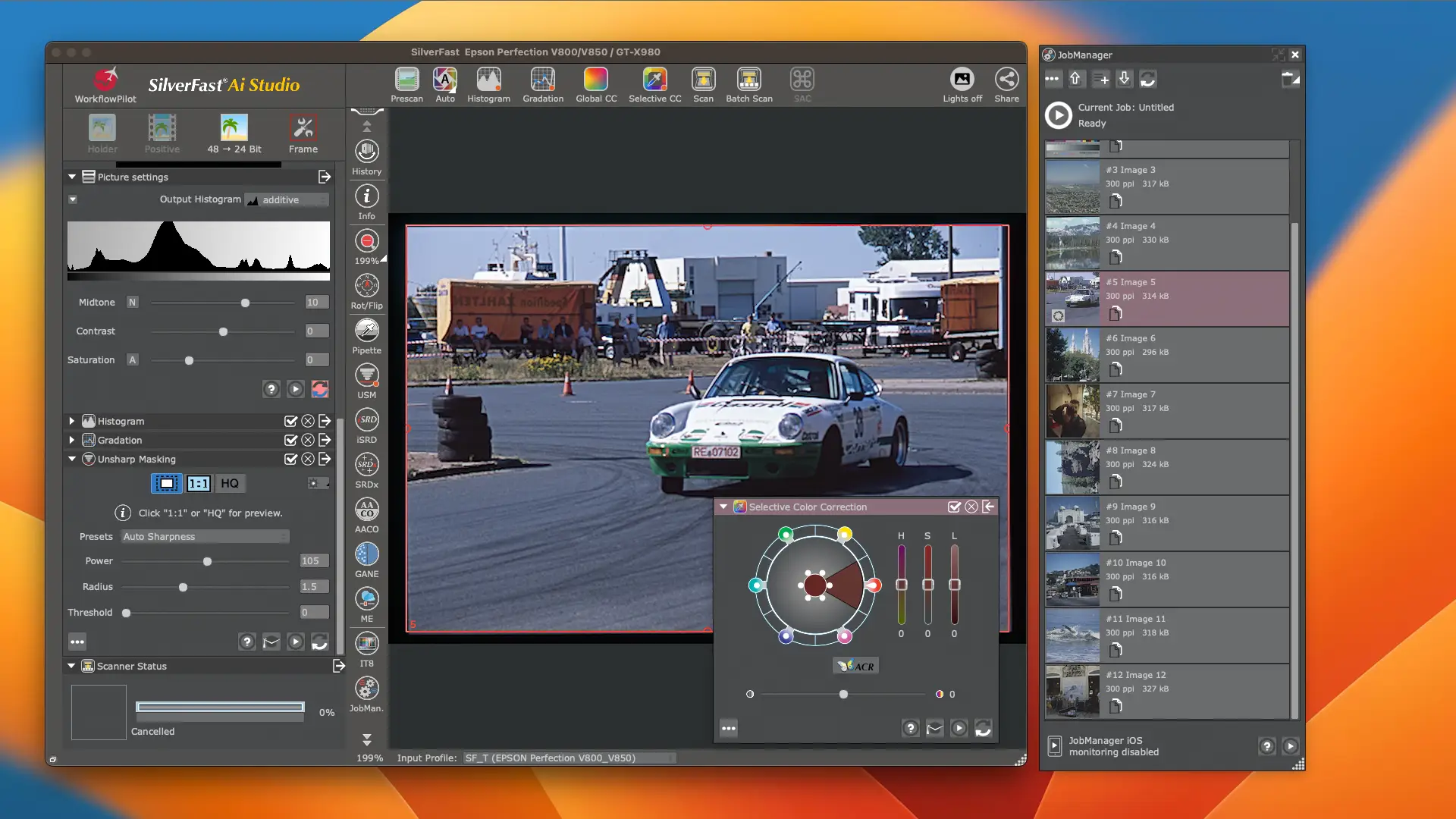
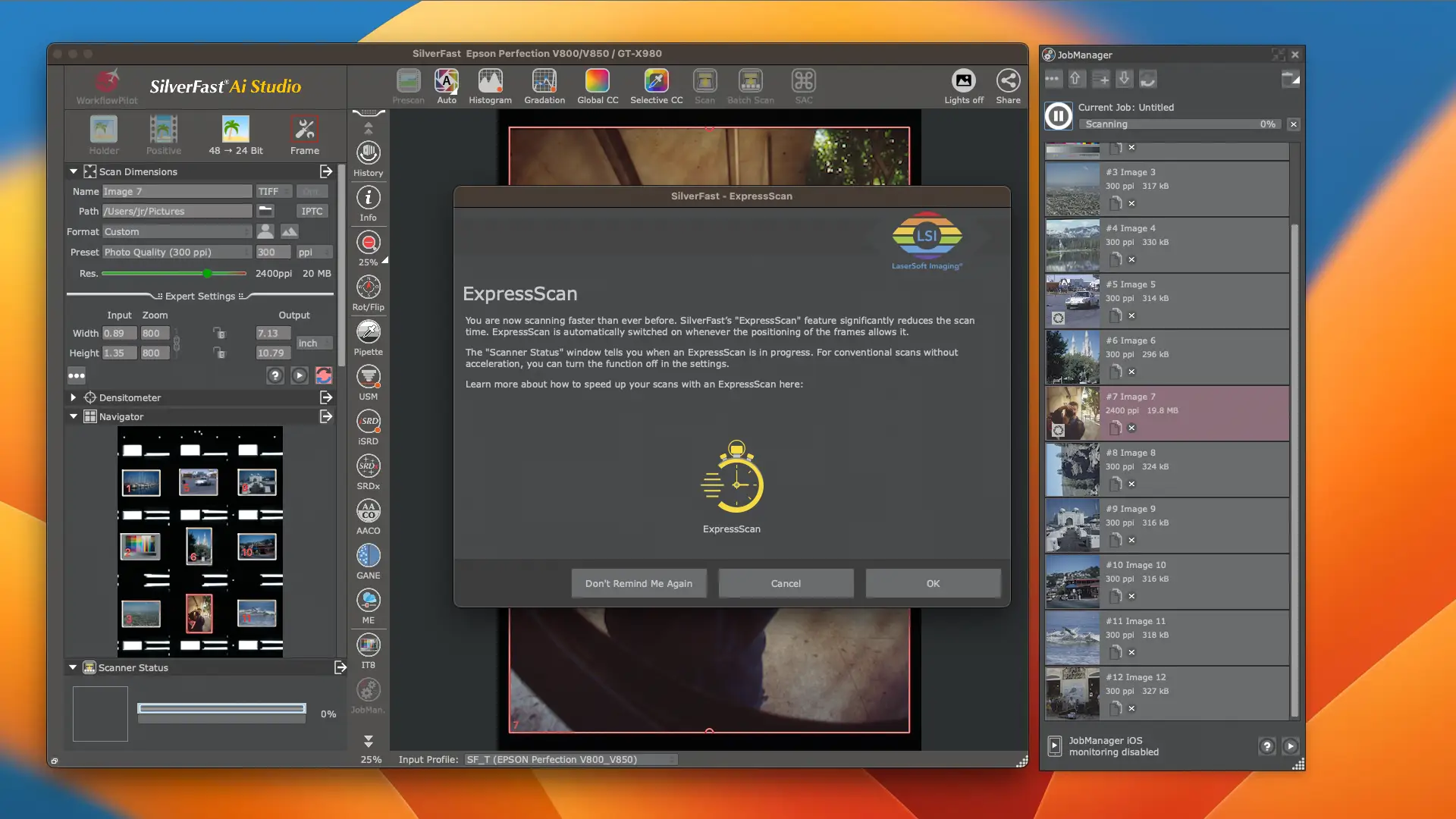
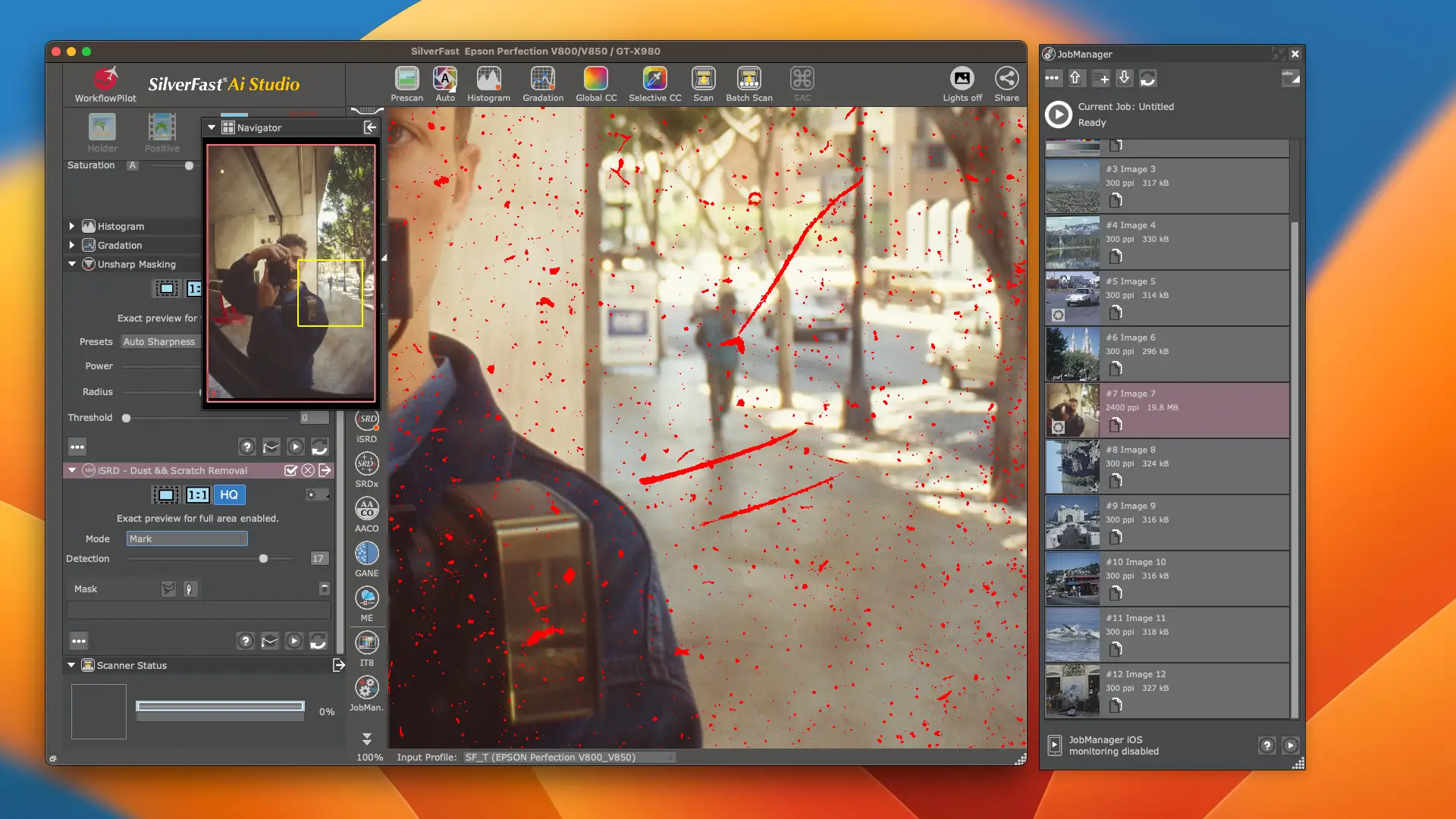
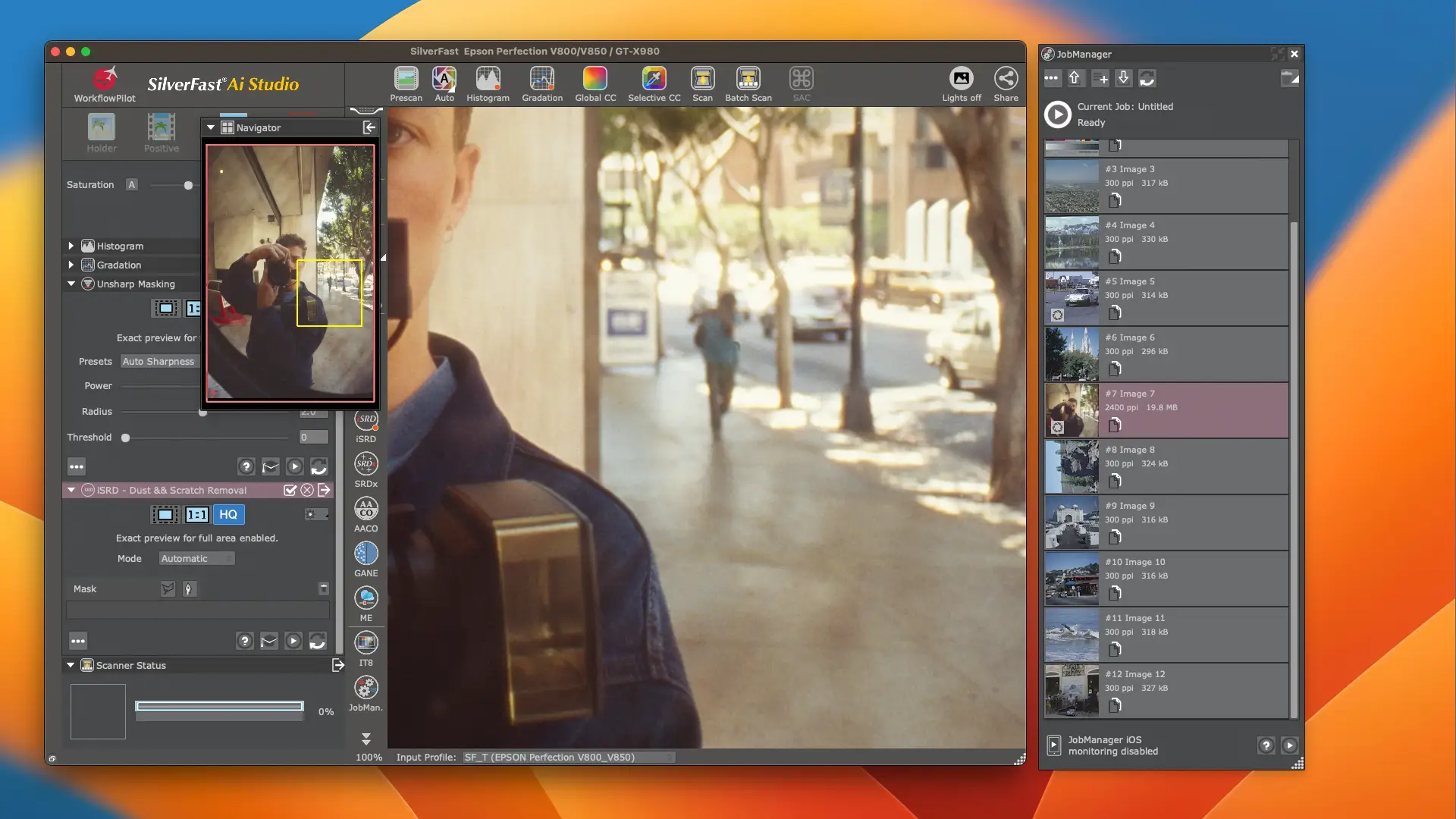

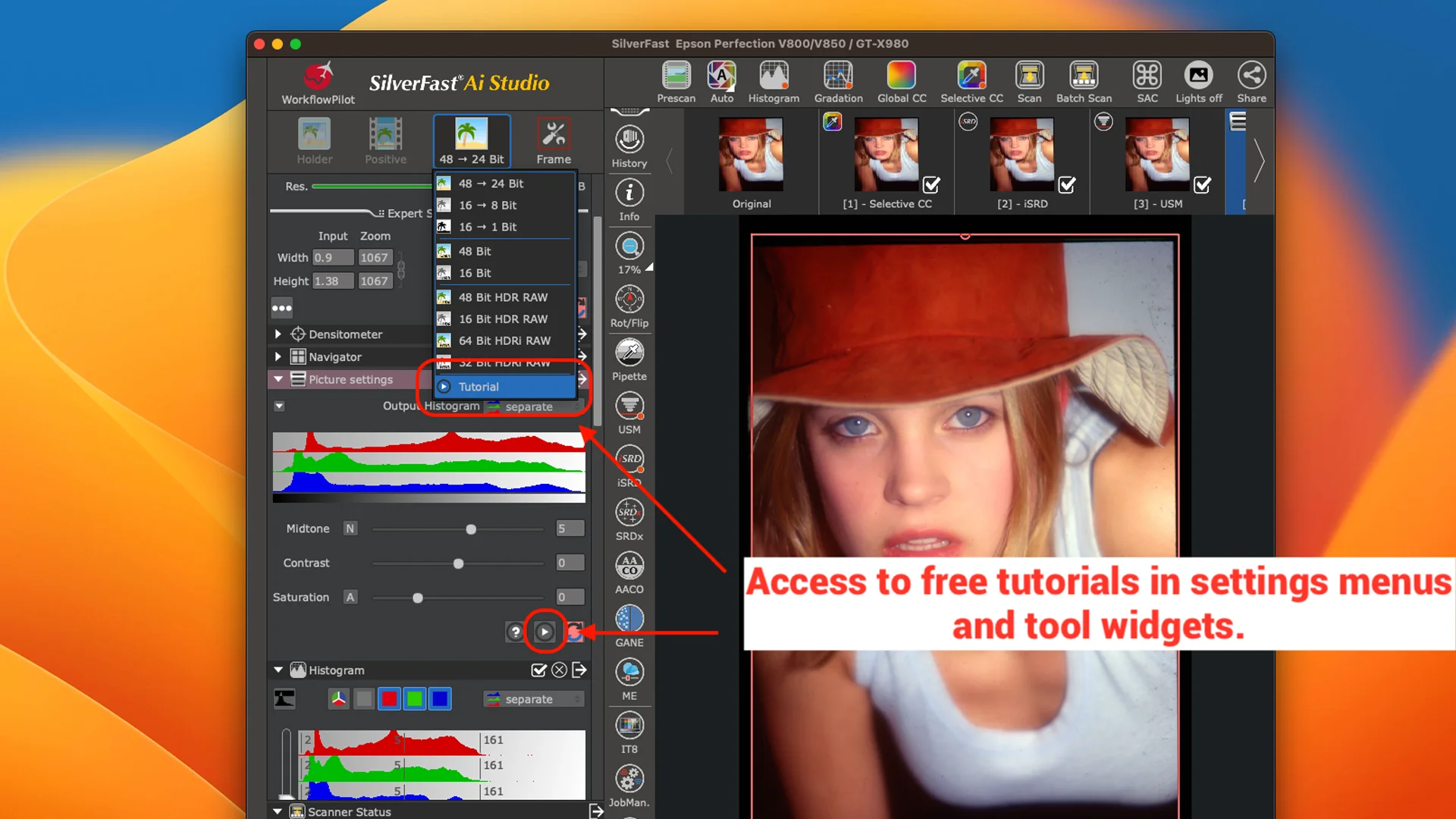
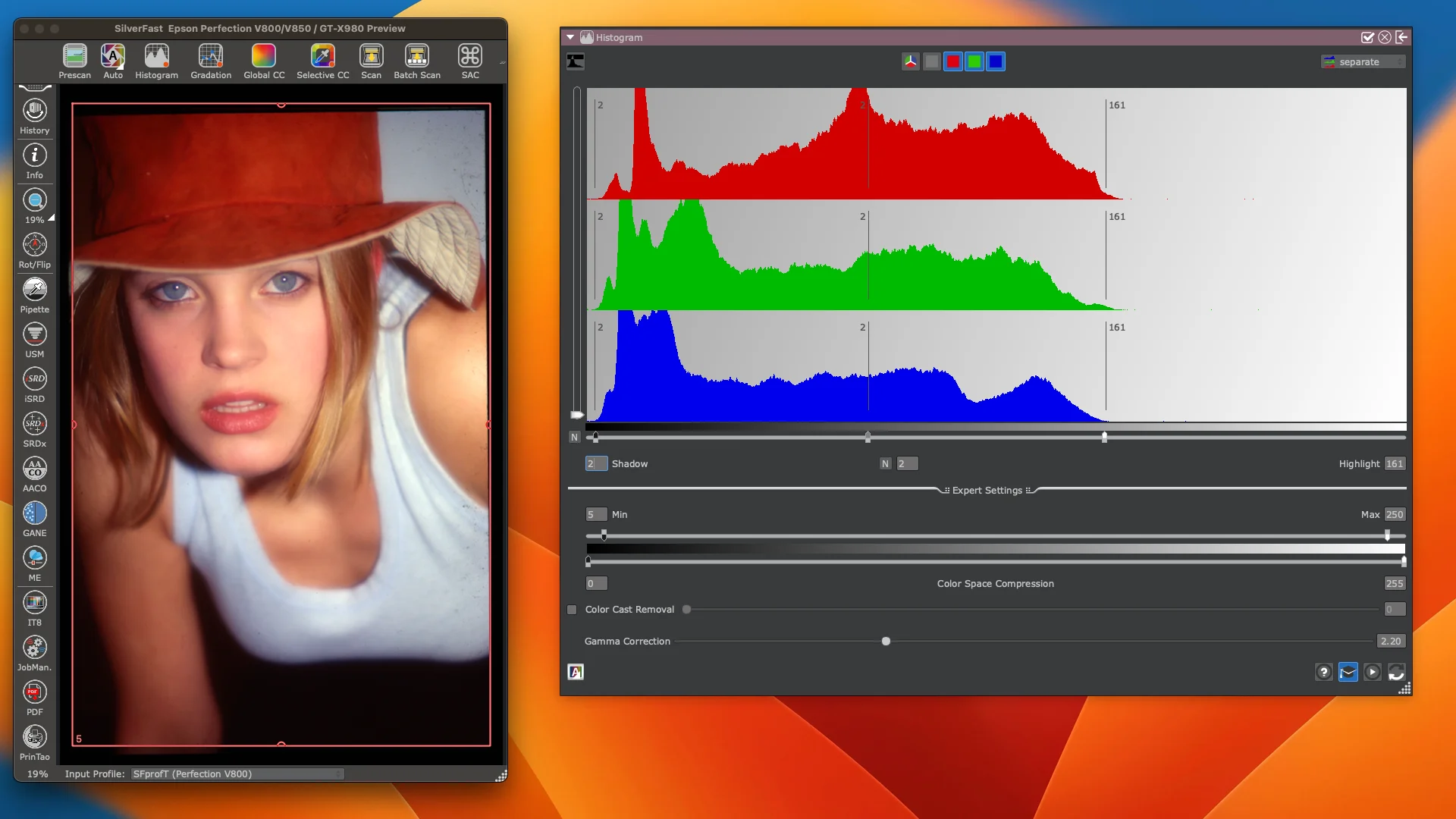



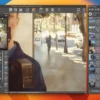
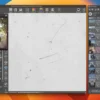
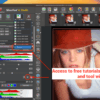

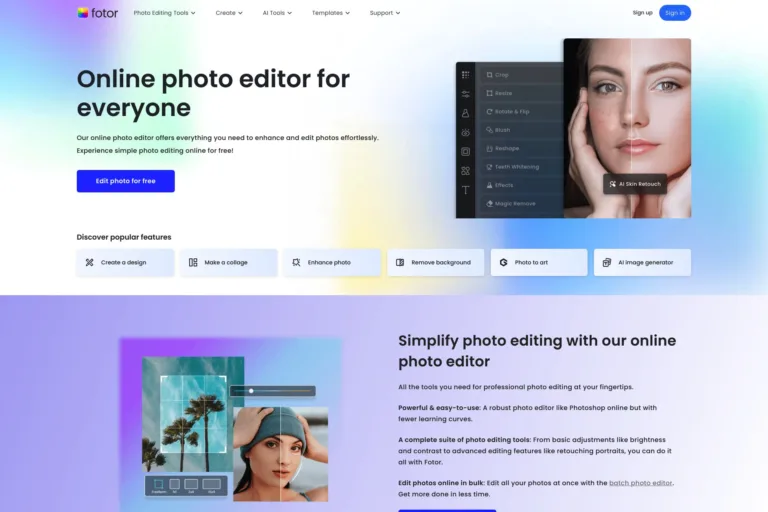
I have had Silverfast for several years, but have not used for the past couple years. I cannot down load the latest update, and a fellow named John that used to assist me no longer has a working email. I have tried to twice email silverfast, only got back delivery failure. Tried from the software help and no response. If still in business can I get assistance? Thanks
Dear Todd,
you received a reply from my colleague shortly after you submitted your comment here. Please check your spam folder as well. Here’s the reply for your reference:
In case of any further questions or comments, please follow-up with the awesome SilverFast support. Best, Jan-Willem